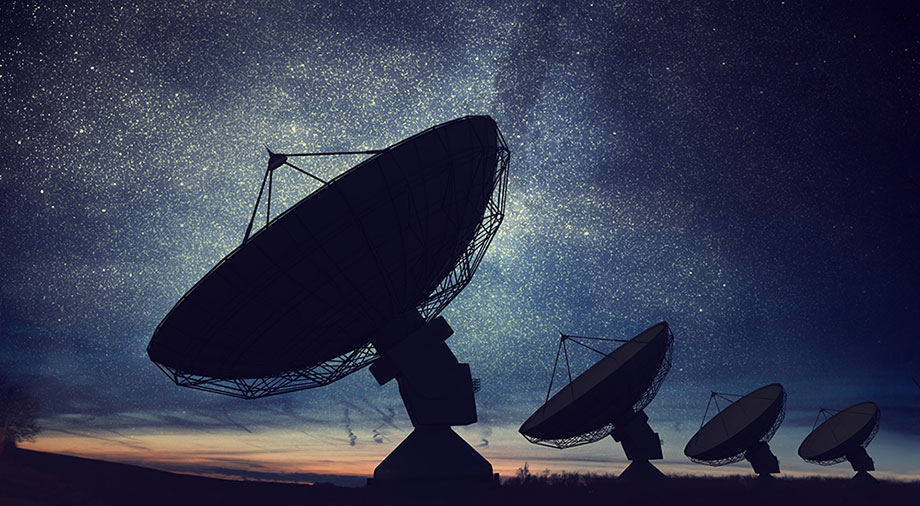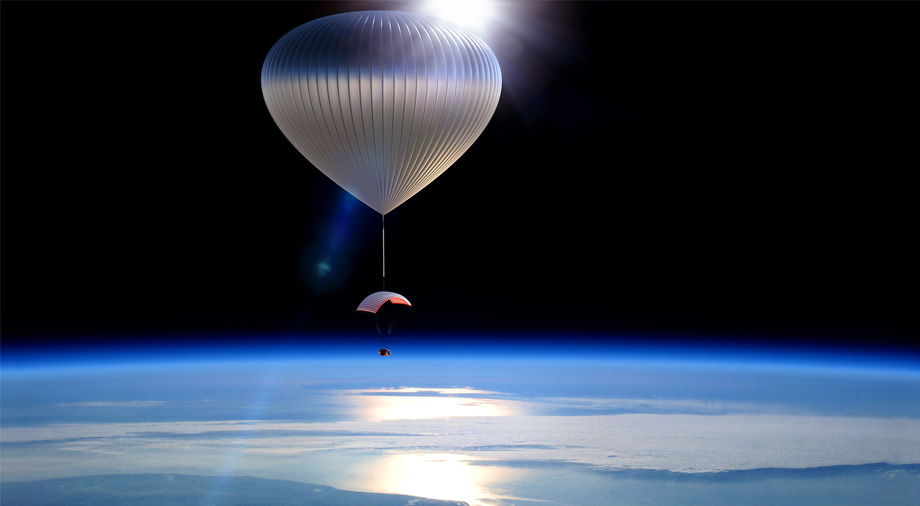December 25, 2021 was, without exaggeration, one of the most important days in the history of modern science. On that day, the James Webb Space Telescope was launched from Kourou, French Guiana, to open a new chapter in humanity’s study of the universe.
In honor of this grand event, we decided to write an essay series dedicated to the cosmic eyes of humanity – the observatories that allow us to peer into the heavens and reveal the secrets of our universe. In this first part, we will talk about the emergence of the first observatories, their evolution, and early attempts to send telescopes into space.
A Brief History of Ground-Based Observatories
We most likely will never know when and where the first observatory in history was built, but it is almost certain that it was created to serve a practical (rather than purely scientific) purpose. Observing celestial bodies and the position of the Moon and Sun allowed the ancients to correctly determine the change of seasons and the onset of sowing and harvesting periods, which in that era was literally a matter of life and death.
We know that ancient Babylon, Assyria, Egypt, China, India and Greece had their own observatories. There is also a popular (albeit disputed) theory that Stonehenge was intended for astronomical observation.
The earliest observatories were usually located on hills, around which landmarks (like stone arcs or towers) were set along the horizon. Using these, observers could determine when certain astronomical events occurred. Later, with the advent of the first measuring instruments, observatories turned into domed structures that protected the instruments from bad weather, and their window openings were used as projection holes for sunlight.
Of course, by modern standards, the possibilities of astronomers of antiquity were extremely limited. They could only rely on their eyes and tools like the sundial and quadrant to determine the position and height of celestial bodies. Nevertheless, even under these conditions, ancient scientists managed to achieve a great deal by determining the features of the movement of the Sun, Moon and planets, as well as compiling the first catalogs of the stars in the sky. On this basis, they created calculation tables that made it possible to predict the position of celestial bodies and various astronomical events (like eclipses) for any date. The quintessential work of ancient astronomy was the Almagest, written by Claudius Ptolemy. It contained all the knowledge about celestial bodies collected by scientists from Greece and the Middle East, and argued the geocentric hypothesis, in which the Earth was at the center of the Universe. For thirteen centuries, Amalgest remained the definitive astronomy text for the whole world.
Ptolemy’s monopoly was broken only in the 16th century, when Nicolaus Copernicus published his revolutionary work, On the Revolution of the Celestial Spheres. In it, he argued that the geocentric hypothesis was wrong, and that in fact it is the Earth that revolves around the Sun, and not vice versa. For some time, these ideas were in competition, but the invention of the telescope at the beginning of the 17th century made the answer clear. The first observations made by Galileo hammered the last nail into the coffin of the geocentric hypothesis. The Earth was finally brought down from the pedestal of the center of the universe.
The advent of telescopes could not but lead to a change in the appearance of observatories. To keep track of objects in the sky, they now needed a rotating dome with an observation aperture. Thus, starting in the mid-17th century, the first modern-type observatories housing large telescopes began to appear in Europe. As a rule, they were created at universities or built by royal decrees.
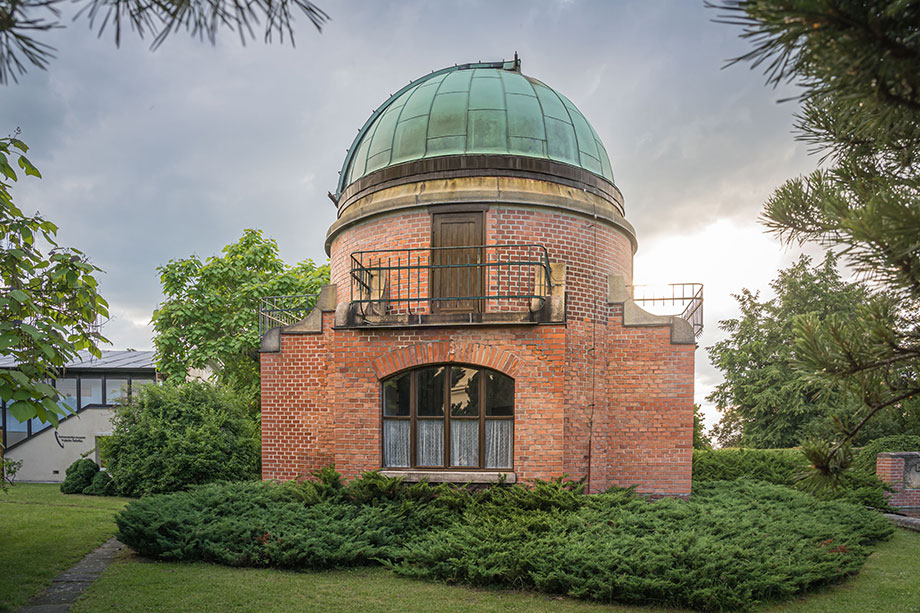
The invention of photography in the 19th century was the next major milestone in the history of astronomy. If before photography, scientists could only sketch what they saw in the eyepiece of their telescope to the best of their abilities, now they had at their disposal a revolutionary tool. First, photography gave astronomers the ability to make unsubjective, accurate images of areas of interest in the sky. Secondly, when photographed at a low shutter speed, photographic plates could accumulate light, allowing them to produce images of objects of extremely low brightness which were otherwise physically impossible to see with the human eye.
At about the same time, another important event for the development of astronomy took place: the invention of spectral analysis. This process, by which scientists determine the chemical composition of celestial bodies by analyzing the wavelengths of the light they emit and reflect, has provided the field of astronomy with insights into the nature of objects lightyears away that were theretofore impossible to even imagine.
But technological progress has also had a downside. The invention of electricity, the emergence of centralized lighting, and the pollution of the atmosphere by industrial emissions at first significantly complicated the conducting of professional sky observations from within cities, before eventually making it impossible. All this drove the “great astronomical migration”: since the end of the 19th century, almost all new observatories have been built far from large settlements. Preference was given to places at high altitude with a high percentage of clear nights per year. These days, the best regions on our planet for placing observatories are the Hawaiian and Canary Islands, the Atacama Desert, parts of some mountain ranges, as well as Antarctica.
Radio Astronomy
Despite all of humanity’s technical advances, up to the 1930s, the basic essence of astronomy remained the same: scientists only worked with the visible light emitted by celestial bodies. The situation began to gradually change with the experiments of Karl Jansky, who was working to determine the source of mysterious interference that was interfering with the operation of a transatlantic radiotelephone. Over time, he managed to establish that the source of the interference was the sky, and it lined up with the position of the center of the Milky Way.
This discovery led to the creation of the first antennas for studying radio emissions from the cosmos. The pioneers of the new industry were able to confirm Jansky’s findings, as well as to find the radio emissions of other celestial bodies, including the Sun and Jupiter.
But the real boom in radio astronomy began after World War II, fueled by advances in radar. First in the UK, and then in other countries, scientists began building telescopes with antennas that were tens of meters in diameter – first fixed, and then rotary. In addition, we started seeing the appearance of antenna arrays: systems of several connected radio telescopes operating as a single instrument (radio interferometers).
The discoveries were not long in coming. Astronomers managed to detect many radio sources, after which the process of their correlation with known celestial objects began. Some turned out to be remnants of supernovas, some were galaxies, and others were clouds of interstellar gas. Previously unknown bodies were also discovered. The first sensation struck in 1963, when radio source 3C 273 was discovered. Observations in the visible range made it possible to identify it with a star-shaped object. Astronomers originally thought 3C 273 was somewhere on the outskirts of the Milky Way, but redshift measurements have shown it to be several billion light-years away. This is how quasars – some of the brightest and most distant objects in the universe – were first discovered. It is now believed that they are galaxies which have black holes in their centers, ,actively absorbing the surrounding matter.
In 1965, astronomers Arno Penzias and Robert Wilson, who were conducting radio experiments, managed to detect the cosmic microwave background radiation left over from the time of the Big Bang, for which they were later awarded the Nobel Prize. Two years later, a no less sensational discovery followed. Astronomers Jocelyn Bell and Anthony Hewish discovered radio pulses that repeated with a strictly consistent. Their source was an object located far beyond the solar system. For a while, astronomers even considered the possibility that its signals could be artificial. This was reflected in the fact that the unknown object received the designation LGM-1 (short “little green men”). But other sources of such impulses were soon discovered. It became clear that the pulses were coming from pulsars: rapidly-rotating neutron stars with powerful magnetic fields. The discovery of pulsars was one of the most important events in the history of modern astronomy, and also earned its authors the Nobel Prize.
But the use of radio telescopes has not been limited to the study of deep space objects. With their help, it was possible to determine the rotation periods of Mercury and Venus, to find traces of ice on bodies within our solar system, and also to determine the shape and characteristics of many near-Earth asteroids.
As in the case of traditional optical telescopes, radio observatories are also located away from populated areas in order to avoid interference from terrestrial equipment. As a rule, they are built in uninhabited, high-altitude corners of our planet. For example, the ALMA complex, consisting of 66 mobile antennas, is located in Chile’s Atacama Desert at an altitude of 5000 meters above sea level.
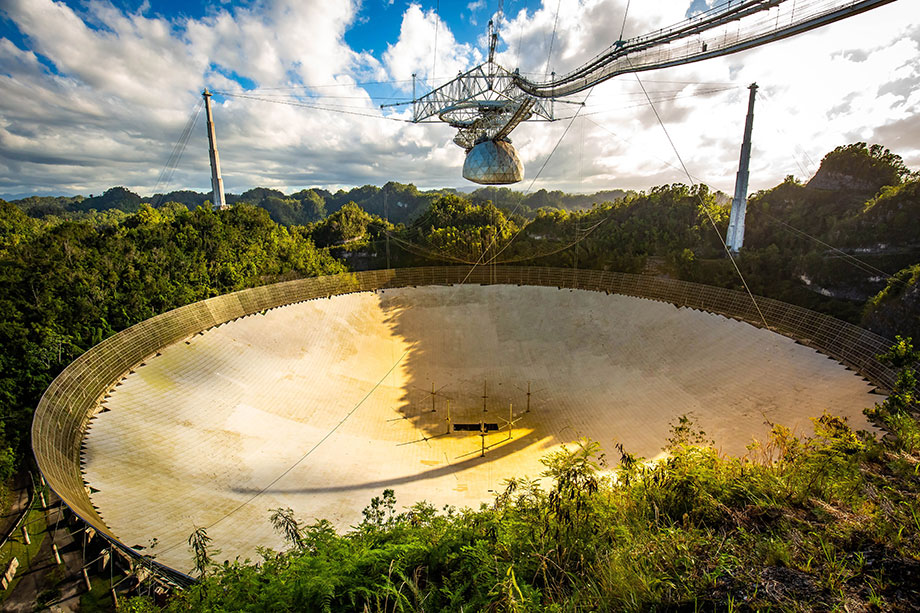
Natural valleys and sinkholes are also well-suited for radio observatories, as they provide cover from electromagnetic radiation. An example is the famous Arecibo, which was located in a natural sinkhole. Unfortunately, the equipment in the telescope collapsed in 2020. China’s FAST, currently the world’s largest filled-aperture radio telescope, is also in a sinkhole.
Telescopes head to the sky
It’s no secret that many astronomers look at our planet’s atmosphere as something of an adversary. It’s not just a matter of bad weather and turbulence. The problem is that the gaseous shell of our planet blocks out a significant share of the electromagnetic radiation that comes our way. Gamma and X-rays, as well as most infrared and ultraviolet waves, do not pass through it. This is great for keeping the Earth safe and habitable, but not as helpful for astronomy!
Thus, it is not surprising that as early as 1923, rocket science pioneer Hermann Oberth proposed the idea of installing a telescope on a rocket. In the 1940s, the space observatory project received theoretical justification when it was proven that an optical telescope placed outside the earth’s atmosphere would be able to observe electromagnetic radiation not only in the visible spectrum, but also in the infrared and ultraviolet ranges, and its angular resolution would be limited only by diffraction.
However, the first attempts to create an extraterrestrial observatory were carried not on rockets, but balloons. In the mid-1950s, the US Naval Research Center initiated a program to place telescopes on high-altitude balloons. The first test observations of the Sun and Venus were carried out under this project.
The next step was the placement of scientific instruments on rockets which flew along suborbital trajectories and left the earth’s atmosphere for several minutes. Thanks to them, astronomers were able to detect X-ray sources located far beyond the solar system, including the famous Cygnus X-1, which became the first candidate suspected of being a black hole. This object even became the subject of a famous friendly wager between legendary scientists Stephen Hawking and Kip Thorne. Thorne bet that Cygnus X-1 was a black hole, while Hawking bet the opposite. By 1990, there was enough data to force Hawking to concede.
A new milestone was reached in 1968 when NASA launched the OAO-2 satellite, carrying an ultraviolet telescope. This is considered to have been the first real space observatory in history.
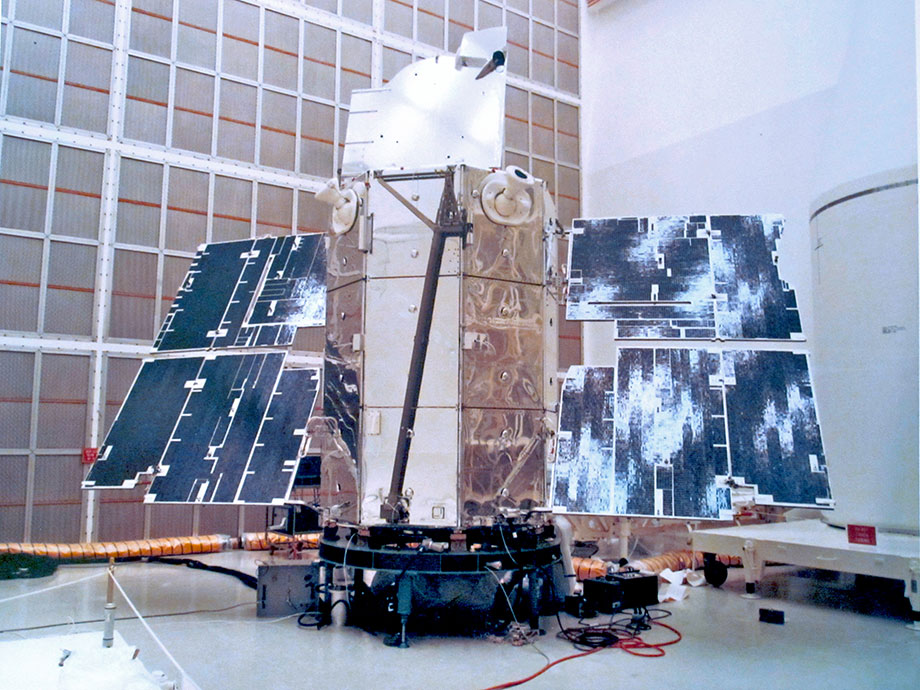
source: www.nasa.gov
It should be noted that astronomical observations were also carried out by astronauts. An ultraviolet telescope was installed on board the Soviet Salyut-1 orbital station launched in 1971. The crew of the Apollo 16 expedition, which launched in 1972, also took with them an ultraviolet telescope with a camera attached to it. After landing on the Moon, the astronauts deployed the instrument, creating the first-ever observatory on the surface of another celestial body. During their stay on the Moon, the expedition members took a number of pictures of the stars, the Earth, and Venus.
It is also worth mentioning the Skylab orbital station launched in 1973. It had a separate compartment in which several telescopes were installed. The film cassettes they shot were taken by astronauts during spacewalks and subsequently returned to Earth for study. The main focus of the Skylab observatory was the Sun, and its observations made it possible to confirm the existence of coronal holes. It also obtained pictures of the comet Kohoutek.
The data collected during these early missions was certainly very important, but it nevertheless quickly became clear that carrying out the future of extraterrestrial astronomy was a job not for humans, but for machines that could handle the job much more efficiently. The success of the OAO-2 mission was a clear demonstration of the capabilities of machines in this regard. Thus, in the early 1970s, NASA embarked on building and deploying a large space observatory equipped with a 3-meter mirror. It was supposed to provide astronomers with the ability to capture images with a resolution unattainable from Earth.
Initially, the project bore the uncomplicated name Large Space Telescope (that is, the Large Space Telescope). But after a while, the device received the name Hubble, which is more familiar to us. The telescope was named after the outstanding astronomer Edwin Hubble, who at one time literally managed to push the boundaries of the universe by proving that the Universe extends beyond the Milky Way. Similar hopes were pinned on the new observatory…

